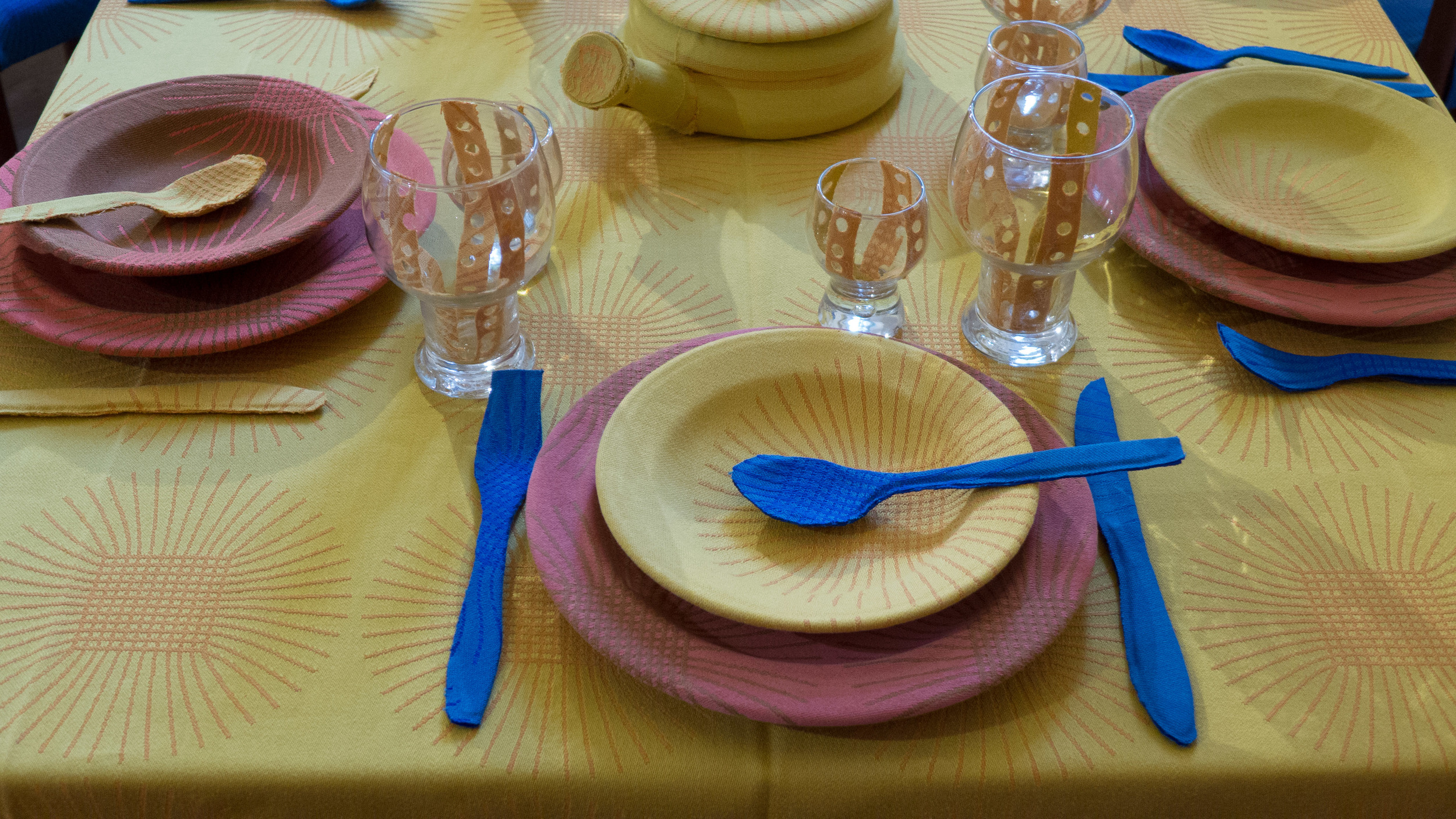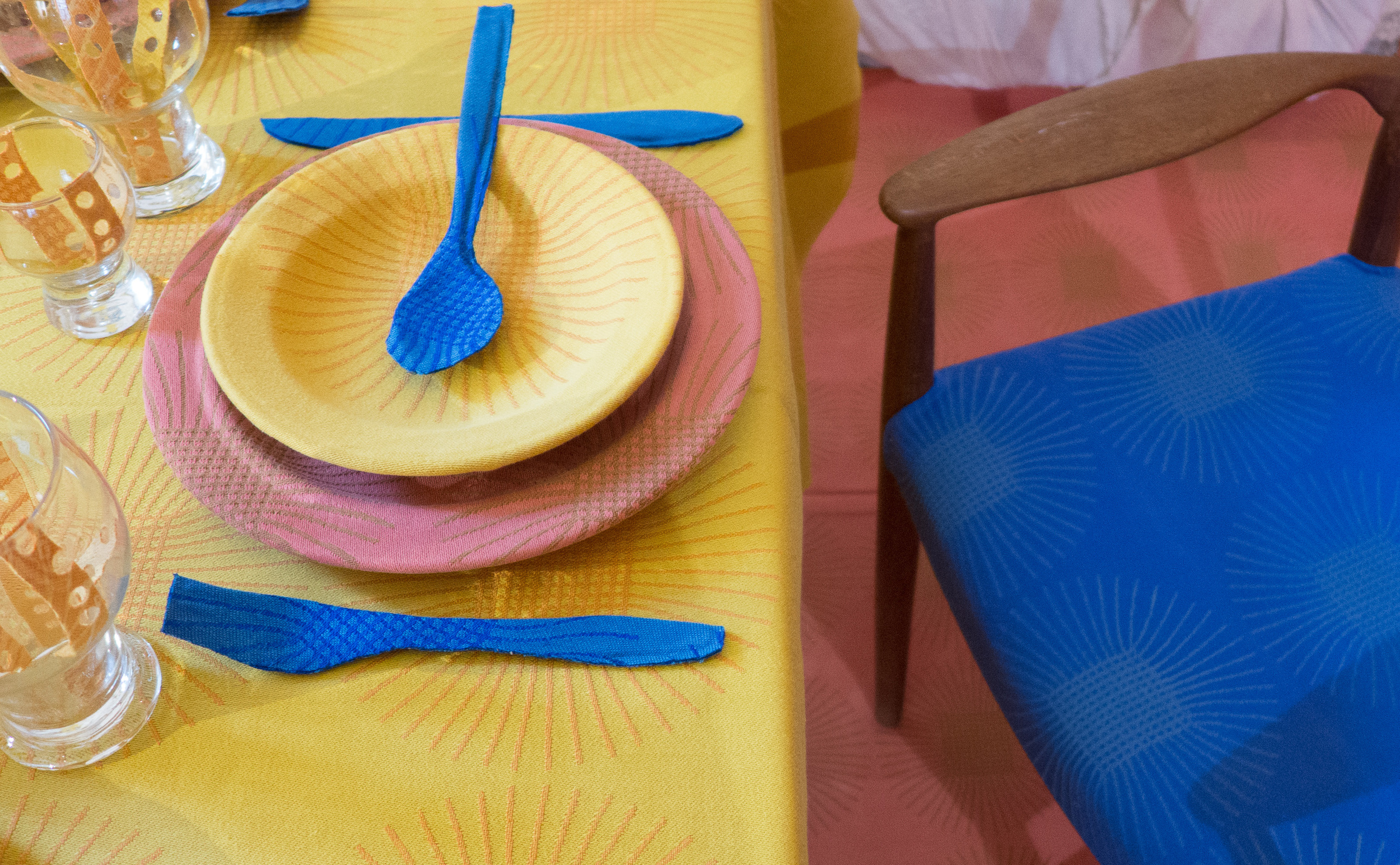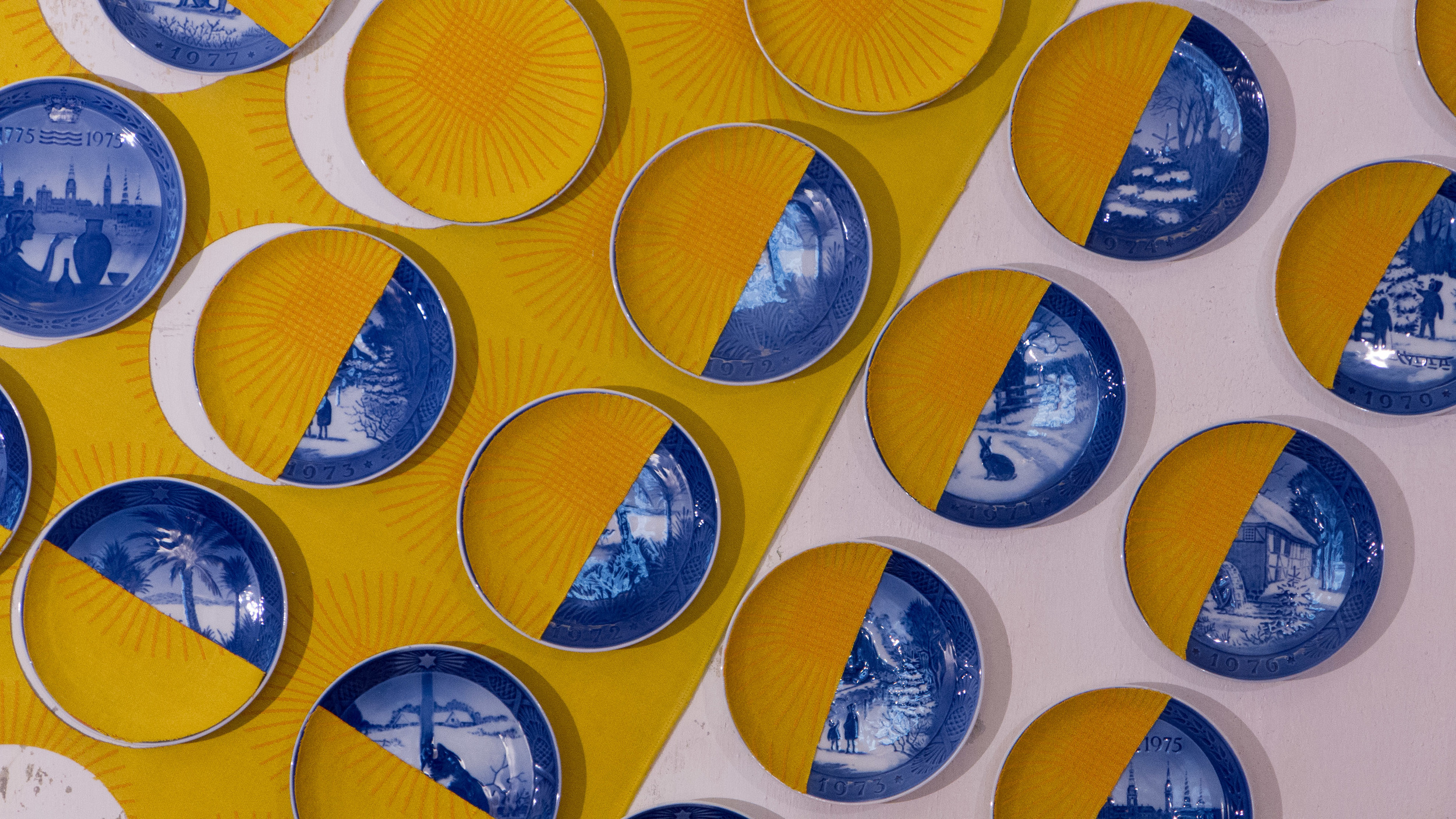Samværket
/On now at the Anne Black Studio on Gammel Kongevej in Copenhagen, just a few doors down from their shop, is an art show or installation with the title Samværket, which I think means Together.
This is the result of an important and imaginative collaboration between Georg Jensen Damask, the Danish textile company, and Cecilie Elisabeth Rudolph, a young fashion and textile designer, who trained at Central Saint Martins in London.
The theme of the installation is a textile for Georg Jensen Damask called Mælkebøtte that was first produced by the company in 1972 from designs by John Kristian Becker, a Danish designer and weaver who trained first at the Gerda Henning Art Hand Weavers School and then at the Danish Weaving School in Geismar. His first work for Georg Jensen Damask called Calypso was designed in 1958 and he went on to produce over 30 designs for the company.
Mælkebøtte, or Dandelion, is a strongly geometric and stylised design formed with a tight central square or grid of lines that extend out, curve and spread apart to form a circular representation of the seed head of the plant that are spaced across the fabric in a simple, tight and regular repeat.
Georg Jensen Damask decided to re-issue the design and in 2014, to promote the table linen in three new colours, they asked people to return original tablecloths to the company to exchange for the new version but on the condition that they also provided the company with the story of how and when and why they or their family had originally bought that table linen. Well over 200 responded.
With such a strong response, they then came up with the idea of an installation to reuse these old tablecloths in an interesting way and chose the theme Together for togetherness. Mette Tonnesen, Marketing Manager at Georg Jensen Damask explained that their “ambition was to create a universe in a fun and informal way that retells stories from the Danish home.”
In the world created by Cecilie Rudolph, with a room set for an elaborate meal, the damask, in strong colours of deep blue, a salmon colour and deep yellow, has been reused for wall covering, upholstery, and flooring … in fact to cover nearly every surface including all the plates and cutlery of the table settings and even over an elaborate candle sconce on one wall … to create an incredibly bold and striking effect.
Lengths of fabric have been cut with laser lettering repeating some of the histories and other stories are also on display. There have been other events at the exhibition to involve visitors and reinforce the theme of entertaining.
In some ways this installation is reminiscent of a project at 2nd Cycle in Helsinki for Artek. To mark the anniversary of the iconic Stool 60 … a design by Alvar Aalto that has been made by the company since the 1930s … 2nd Cycle took back stools that had been purchased over the years but again asked for personal family stories that explained why the stool had been important to them or why it had been repainted or who had covered the stool with fabric.
Both projects have identified that strong loyalty that customers can feel to both a company and a product but it also shows new customers that, when they invest in a well-made design, a design or product can become a cherished and important part of their own life story and possibly over a considerable period of their life.
Of course fine tablecloths from Georg Jensen reflect the important role of entertaining in Danish life and with it the tradition of setting a large table for a gathering of family and friends with good linen, china, glassware and cutlery.
Samværket continues at Anne Black Studio, Gammel Kongevej 103, Copenhagen until 16 October







































